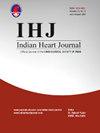Determination of Induction Time in Adult Patients with Valvular Heart Disease
IF 1.8
Q3 CARDIAC & CARDIOVASCULAR SYSTEMS
引用次数: 0
Abstract
Objective
Intravenous anaesthetics induce loss of consciousness in one arm-brain circulation time. As the circulatory transit time in patients with mitral stenosis (MS) and aortic stenosis (AS) is increased, the delivery of anaesthetics to the brain may be prolonged and consequently the onset of hypnosis. This study aimed to compare the induction time in patients with and without valvular heart disease (VHD).
Design
Prospective, single-center, open-label analytical study.
Setting
It was conducted in adult patients undergoing elective cardiac surgery.
Participants
The patients (n = 144) were segregated into three groups; Group 1 - Stenotic VHD (MS, AS), Group 2 - Regurgitant VHD (Mitral Regurgitation, Aortic Regurgitation), and Group 3 – Control (coronary artery disease).
Method
General anaesthesia was induced with intravenous thiopental 4mg kg−1 bolus over 20s. The time to induction was noted as loss of eyelash reflex. Bispectral Index (BIS) values were recorded over 2 min. Statistical analysis was performed using SPSS software version 25.0. A p value < 0.05 was considered significant.
Main results
Patients in Group 1 (n = 48) had significantly prolonged induction time (99.6 ± 12.9s; p < 0.001) compared to the other two groups (n = 48 each) (68.5 ± 9.6s in Group 2 and 70.4 ± 11.8s in Group 3). Time required for BIS to fall below 60 was significantly longer in Group 1 (139.4 ± 24.6s; p < 0.001) compared to Group 2 (90.4 ± 6.3s) and Group 3 (92.1 ± 12s).
Conclusion
The induction time was prolonged in patients with stenotic VHD compared to patients with regurgitant VHD or those without VHD.
成年瓣膜性心脏病患者诱导时间的测定。
目的:探讨静脉麻醉剂致意识丧失的一臂-脑循环时间。由于二尖瓣狭窄(MS)和主动脉瓣狭窄(As)患者的循环传递时间增加,麻醉剂到大脑的输送可能会延长,从而导致催眠的开始。本研究旨在比较有和无瓣膜性心脏病(VHD)患者的诱导时间。设计:前瞻性、单中心、开放标签分析研究。背景:研究对象为接受择期心脏手术的成年患者。参与者:144例患者分为三组;1组-狭窄性VHD (MS, AS), 2组-反流性VHD(二尖瓣反流,主动脉反流),3组-对照组(冠状动脉疾病)。方法:采用硫喷妥钠4mg kg-1分次静脉注射,麻醉时间为20s。诱导时间为睫毛反射丧失。在2分钟内记录双谱指数(BIS)值。采用SPSS 25.0软件进行统计分析。A P值< 0.05被认为是显著的。主要结果:1组患者(n = 48)诱导时间明显延长(99.6±12.9s;P < 0.001),与其他两组(n = 48)相比(2组68.5±9.6s, 3组70.4±11.8s)。第一组BIS降至60以下所需时间明显延长(139.4±24.6s);P < 0.001),而组2(90.4±6.3s)和组3(92.1±12s)。结论:狭窄性VHD患者诱导时间较反流性和无VHD患者明显延长。
本文章由计算机程序翻译,如有差异,请以英文原文为准。
求助全文
约1分钟内获得全文
求助全文
来源期刊

Indian heart journal
CARDIAC & CARDIOVASCULAR SYSTEMS-
CiteScore
2.60
自引率
6.70%
发文量
82
审稿时长
52 days
期刊介绍:
Indian Heart Journal (IHJ) is the official peer-reviewed open access journal of Cardiological Society of India and accepts articles for publication from across the globe. The journal aims to promote high quality research and serve as a platform for dissemination of scientific information in cardiology with particular focus on South Asia. The journal aims to publish cutting edge research in the field of clinical as well as non-clinical cardiology - including cardiovascular medicine and surgery. Some of the topics covered are Heart Failure, Coronary Artery Disease, Hypertension, Interventional Cardiology, Cardiac Surgery, Valvular Heart Disease, Pulmonary Hypertension and Infective Endocarditis. IHJ open access invites original research articles, research briefs, perspective, case reports, case vignette, cardiovascular images, cardiovascular graphics, research letters, correspondence, reader forum, and interesting photographs, for publication. IHJ open access also publishes theme-based special issues and abstracts of papers presented at the annual conference of the Cardiological Society of India.
 求助内容:
求助内容: 应助结果提醒方式:
应助结果提醒方式:


